Table of content
In the fast-paced world of e-commerce, customer retention is a critical metric for sustainable growth. Marketing automation can ally with companies that want to increase their loyal customer base and make their businesses thrive. From personalized communication to strategic loyalty programs, we share insights and real-world examples that will empower brands to boost their customer satisfaction and make them come back to buy again.
If you want to explore this topic in the video form, watch the session below:
A Few Facts About Customer Retention
Before we begin, it’s important to establish some crucial facts. The first one is that 80% of e-commerce customers never return to make more purchases. This number seems to be quite high and can be a source of anxiety. To determine how to change this situation, we have to find out the reasons for not coming back. These are:
- One-time need
- Negative price/value perception
- Low customer satisfaction
- Lack of engagement
Understanding that client retention is not just about selling more but creating long-term relations with the customer is essential to maintaining profitability and sustainability.
Acquisition can cost five times more than retention – keeping an existing customer is cheaper than getting a new one. Businesses should pay attention to their customer lifetime value (CLV) and customer acquisition cost (CAC) ratio to find out if their profit is higher than spending.
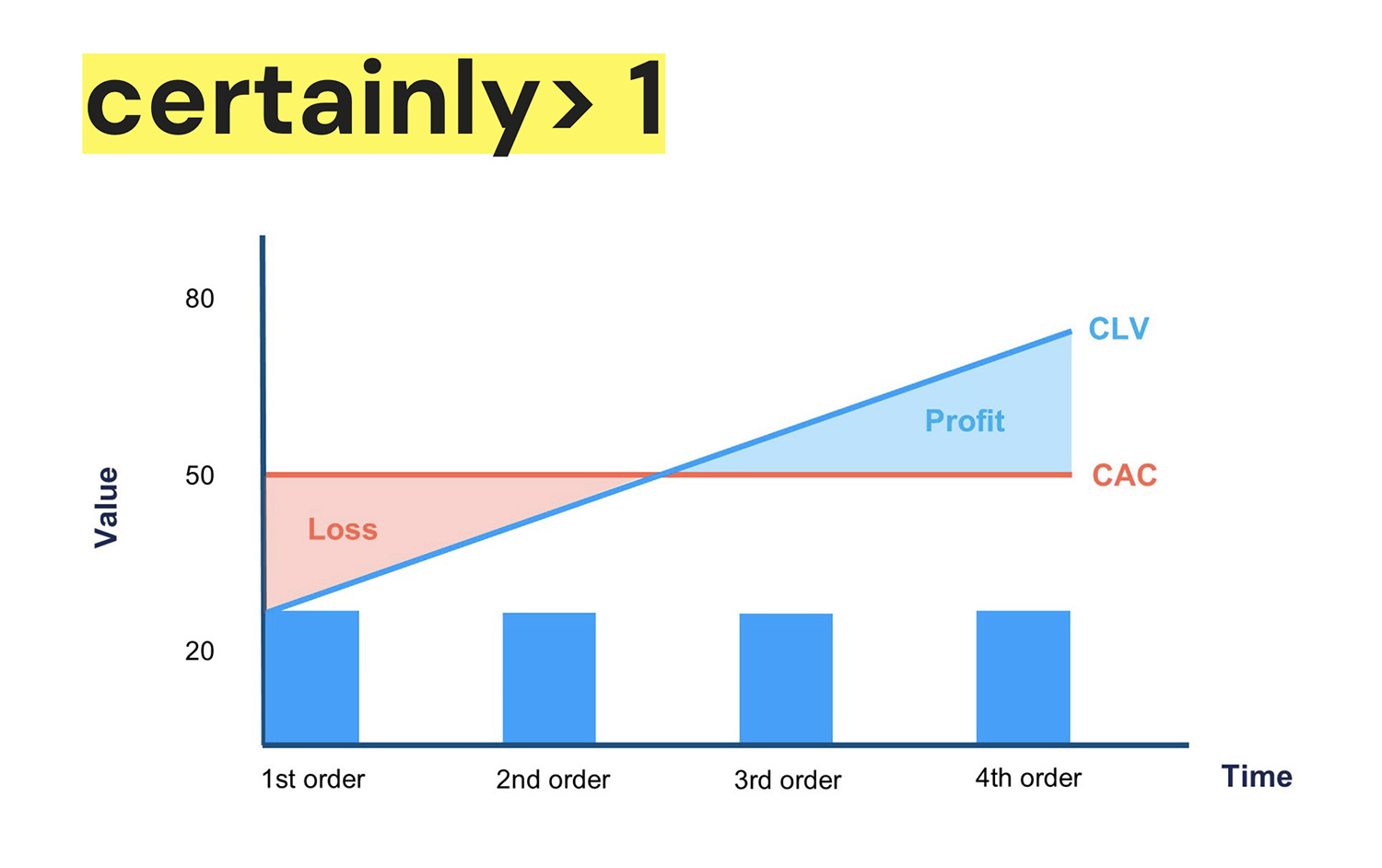
Client Retention through Automation
Now, let’s take a closer look at the actual client retention techniques that can help e-commerce stores walk their customers through the sales funnel. The classic client retention through the automation process begins when a person becomes a lead, leaving a lot of data (e.g. their email address) to the seller. Then, they’re converted into their first purchase. After that, it’s time to build engagement and gain a loyal customer base.

In our case, that behavior is going from the top of the funnel to the bottom. The customer lifecycle is long, and various strategies can be applied to keep them interested. A media mix can include email campaigns, text messages, paid ads, landing pages, and more. Testing is imperative to determine what provides the desired results.
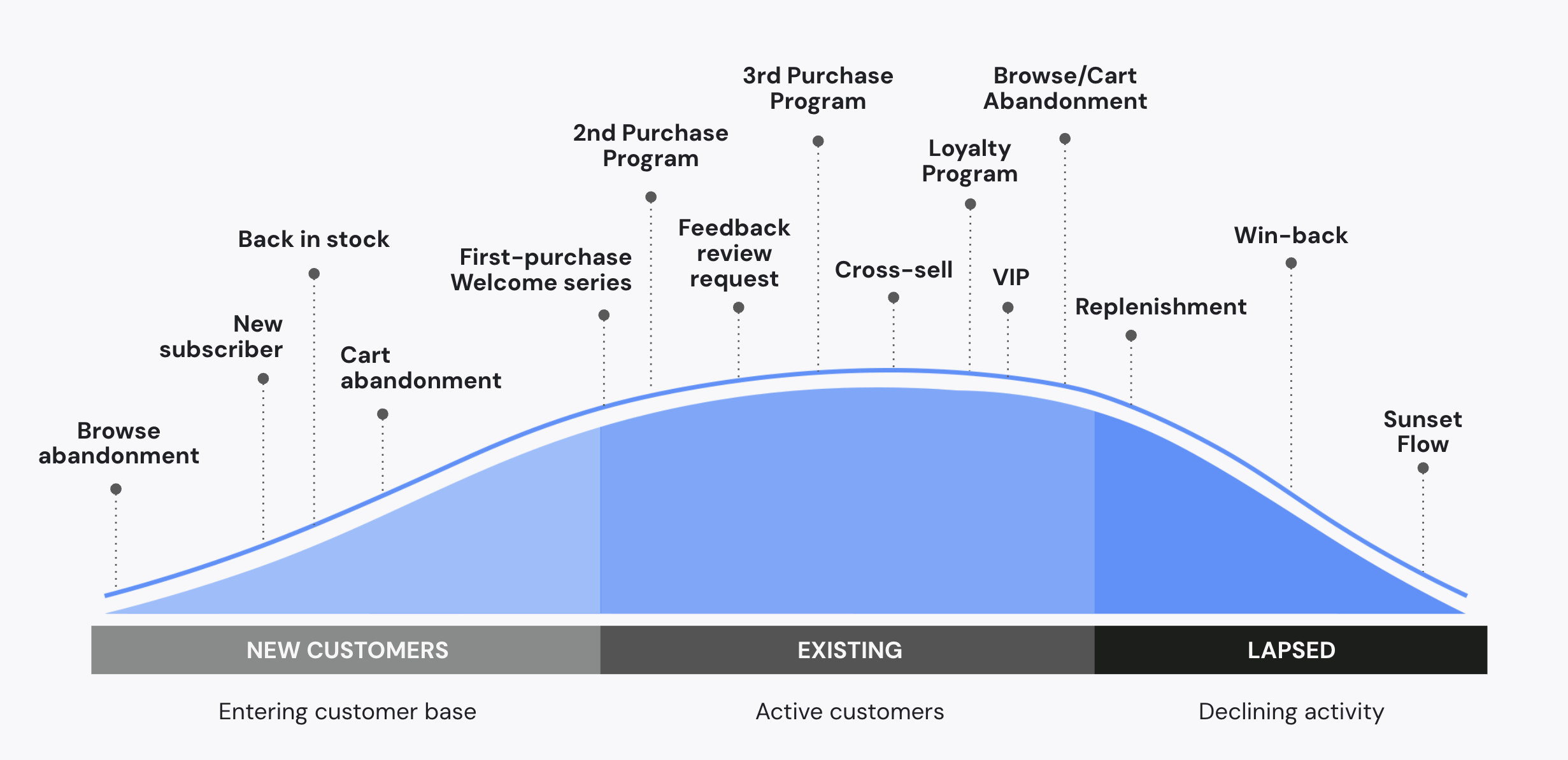
Segmentation: The Foundation of Personalization
Understanding the audience is key to effective communication. Smart segmentation means e.g. that a heavy metal fan will never receive an invitation to a Taylor Swift concert 🙂 Grouping customers means they are divided by demographics (age, gender, location), psychographics (interests, values, lifestyle), behaviors, and their purchasing history (recency, frequency, spending = RFM), which guarantees that even with a big list of recipients, messages can be personalized.
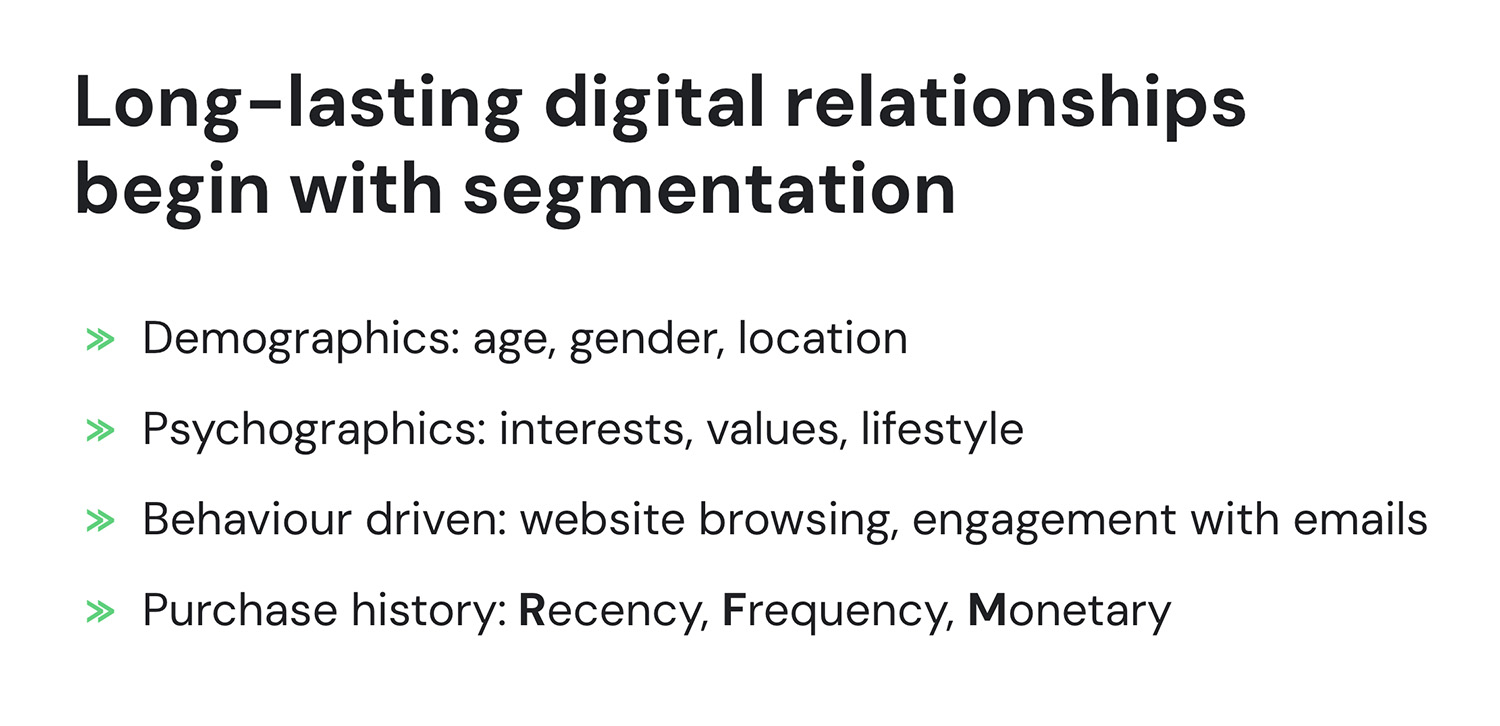
The next step is to answer questions that will help craft the best client retention strategies. Some of them can include determining the high- and low-value customers. Others will help the organization to find out when the customer is considered loyal and when they are not engaged.
All that will lead to better deliverability, decreased unsubscribe rates, higher open rates, more clicks, increased conversions, and improved brand image in general.
Post-Purchase Communication: Nurturing Customer Excitement
Many consumers suffer from the WISMO (“Where is my order?”) syndrome.
Post-purchase emails, including transaction information messages, have the highest open rates of all campaigns and automations. This is the moment to shine. Fun, engaging, meaningful communication keeps the anticipation alive.
It’s a chance to build trust, educate customers, enhance their experience, and generate additional revenue in the future. Such emails often encourage clients to visit a website, re-order products, and increase their overall lifetime value.
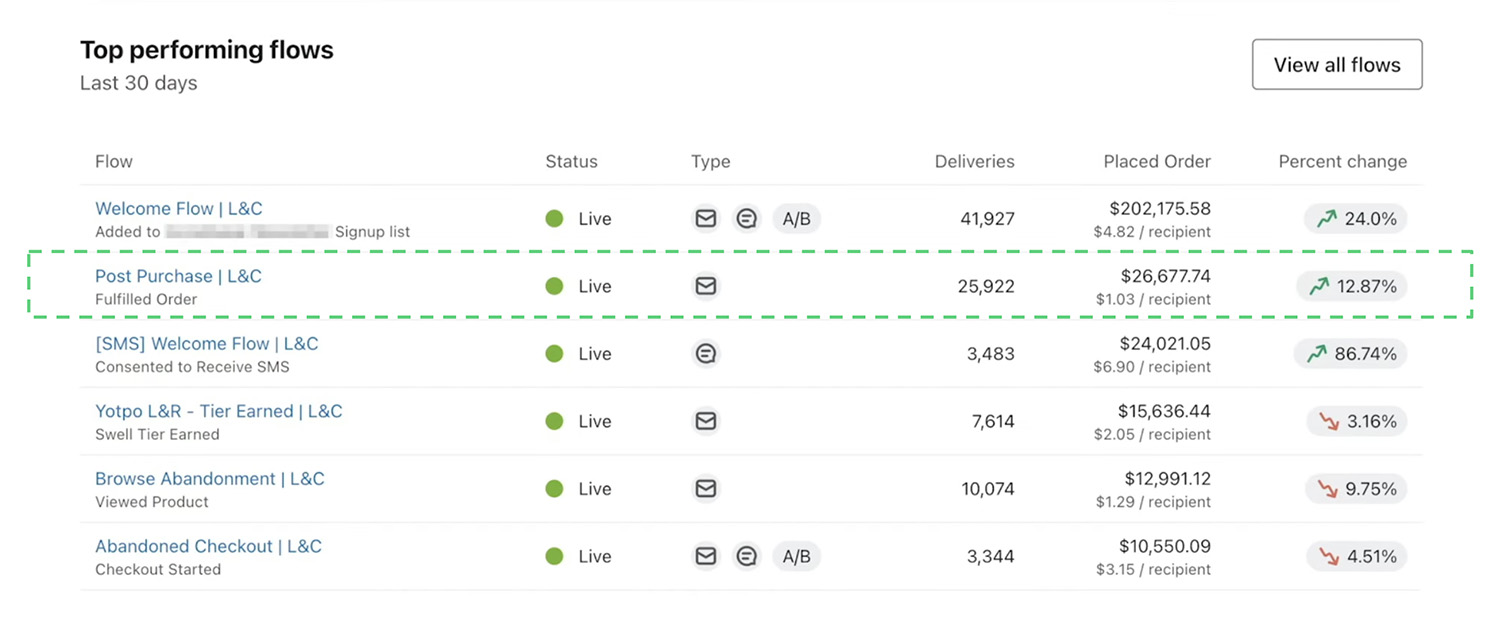
Some flows that can be used, also based on segmentation, include:
- Distinguishing first-timers from repeating buyers
- Nurturing VIPs and encouraging newbies to sign up for loyalty programs
- Educating how to use the product
- Conquering any post-purchase doubts with exciting content
- Providing the necessary information about the order
- Asking for a review or feedback (getting user-generated content by offering rewards in return)
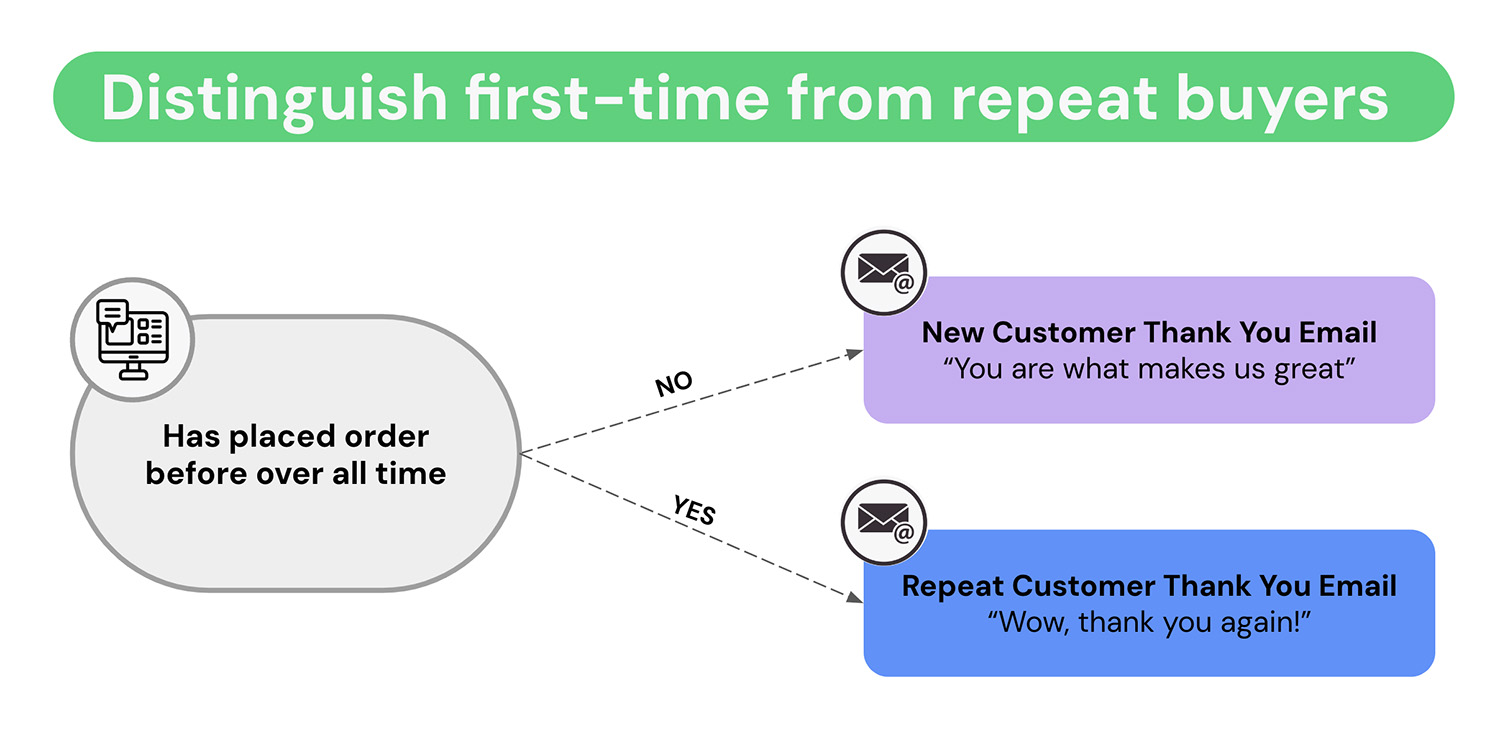
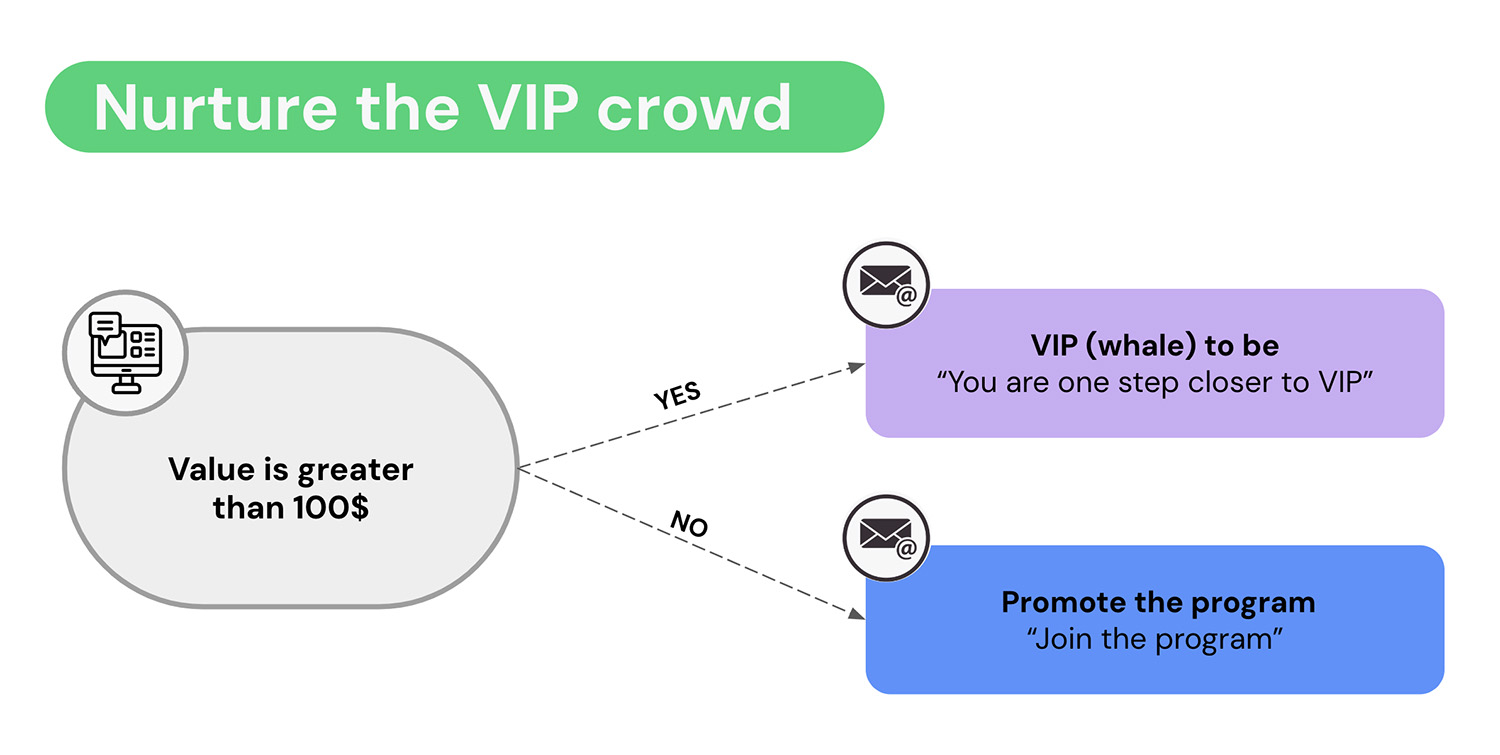
Repeat Purchase Flow: Anticipating Customer Needs
Predictive analytics is perfect for providing special offers at the right time. Repeat purchase flow leverages historical data and machine learning to forecast customer behavior. By sending timely, personalized messages, businesses can encourage the next transactions and surprise customers with special deals.
Examples? Reminding about replenishments or cross-selling items. Being aware of customer’s moves (for instance, if they are keeping something in their cart at the moment) is the best way to engage with them again.
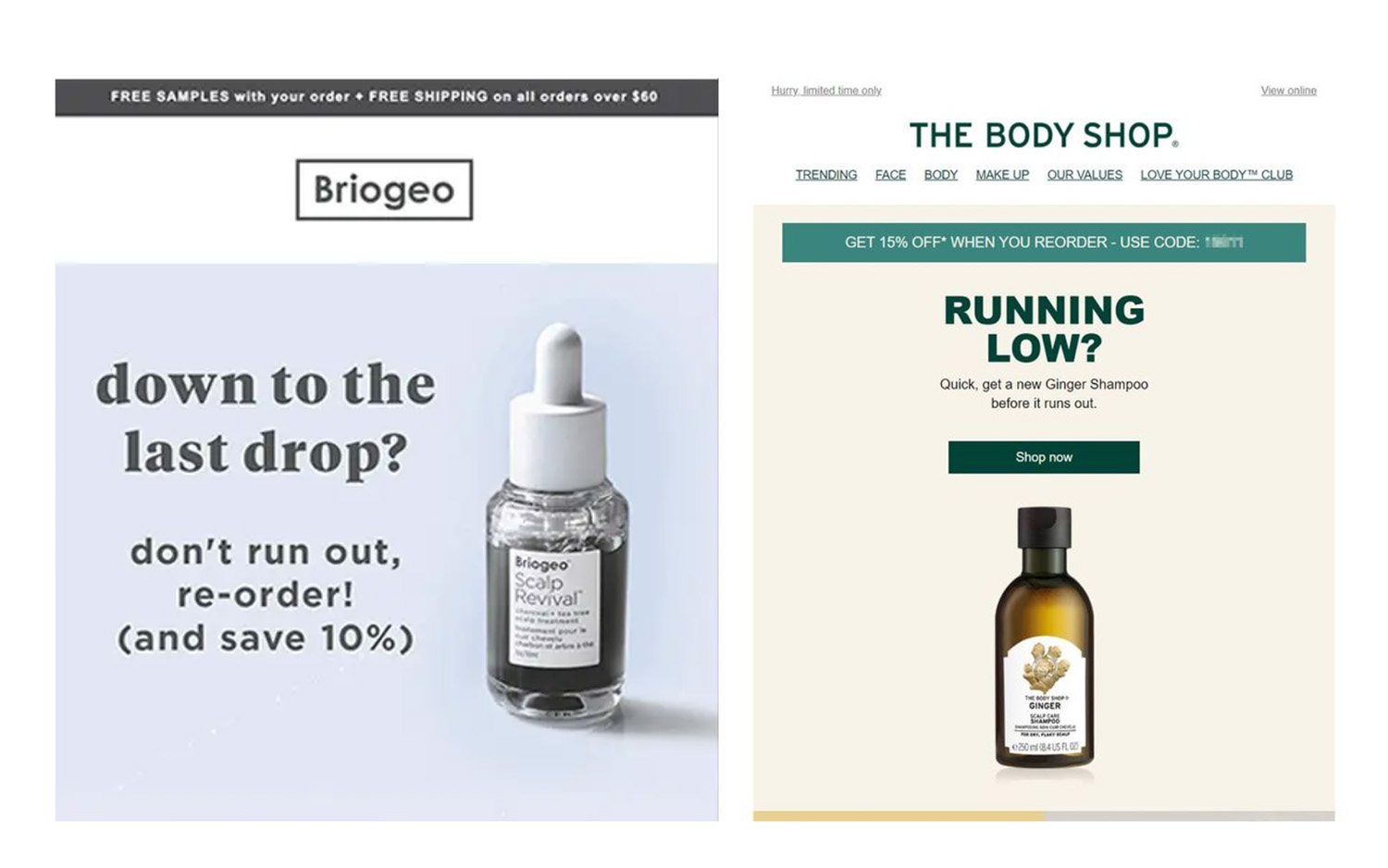
Rewarding Customer Behaviors: Loyalty and Referral Programs
Well-designed rewards drive both existing and potential customers. Referral systems are easily implementable and come in two forms – direct or tiered.
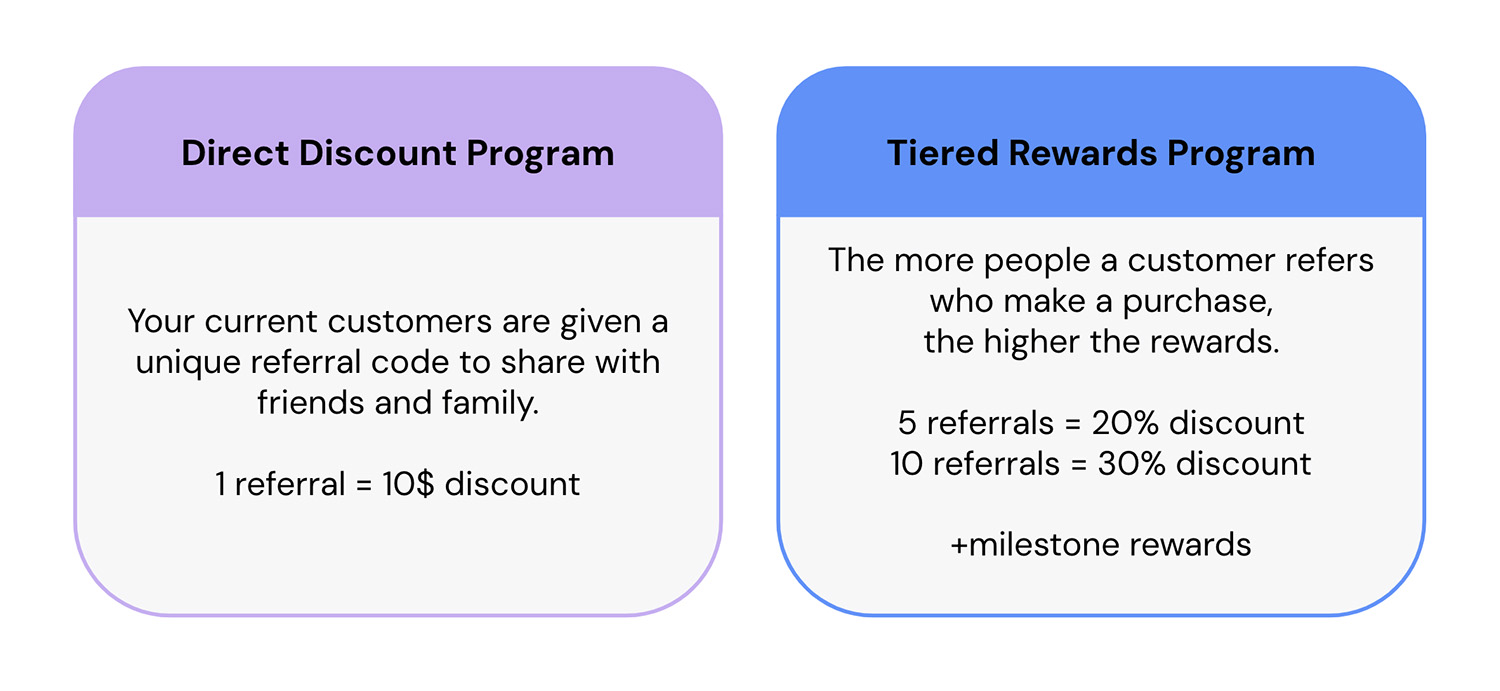
Loyalty programs boost annual revenue from customers by 15-25%. However, it’s crucial to decide wisely what type of program to offer. Point based ones are the most popular, but programs that offer certain value (e.g. support for social causes) are increasing in popularity.
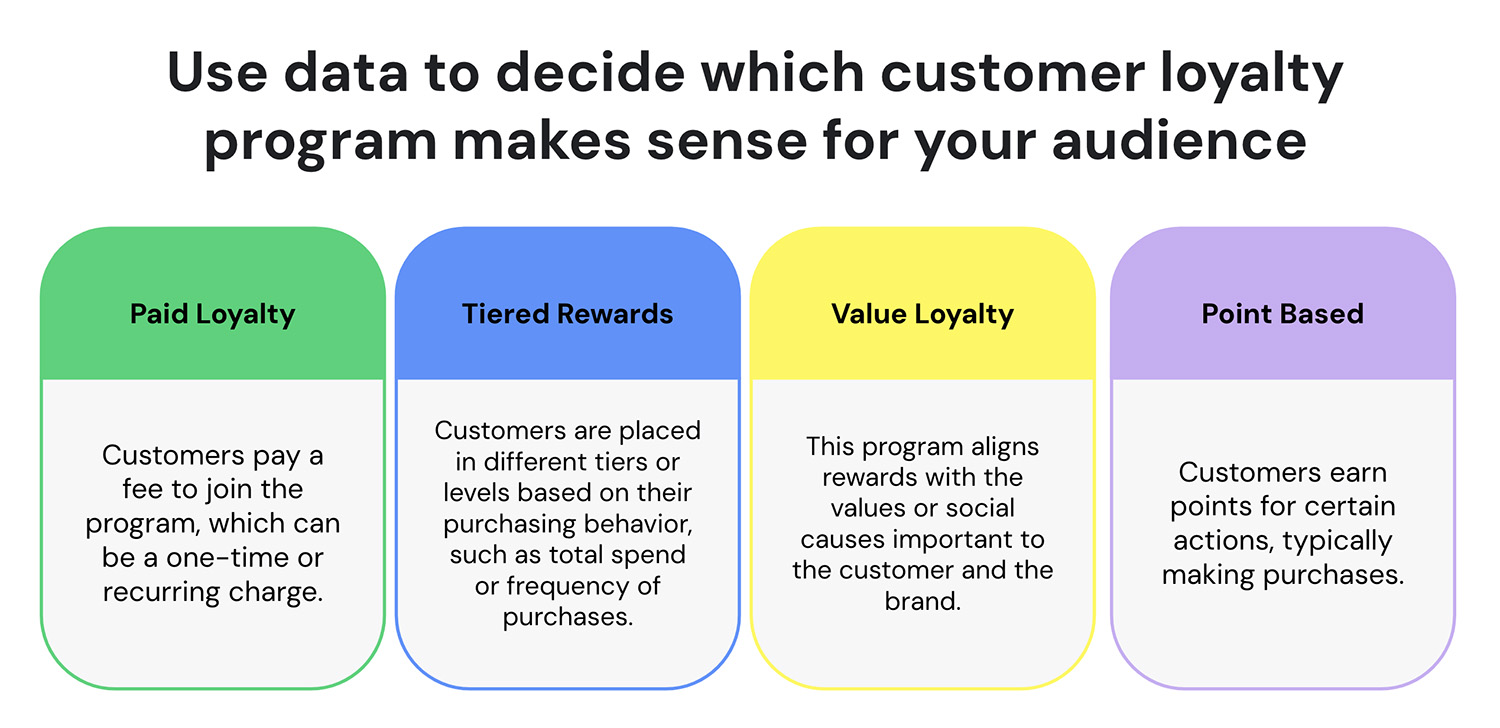
McKinsey’s survey on loyalty programs proves that customers are more likely to purchase regularly, choose a brand over competitors, and spend more on a brand when they are a part of loyalty programs. What’s important is that every step of a loyalty system can be automated, ensuring a higher success rate.
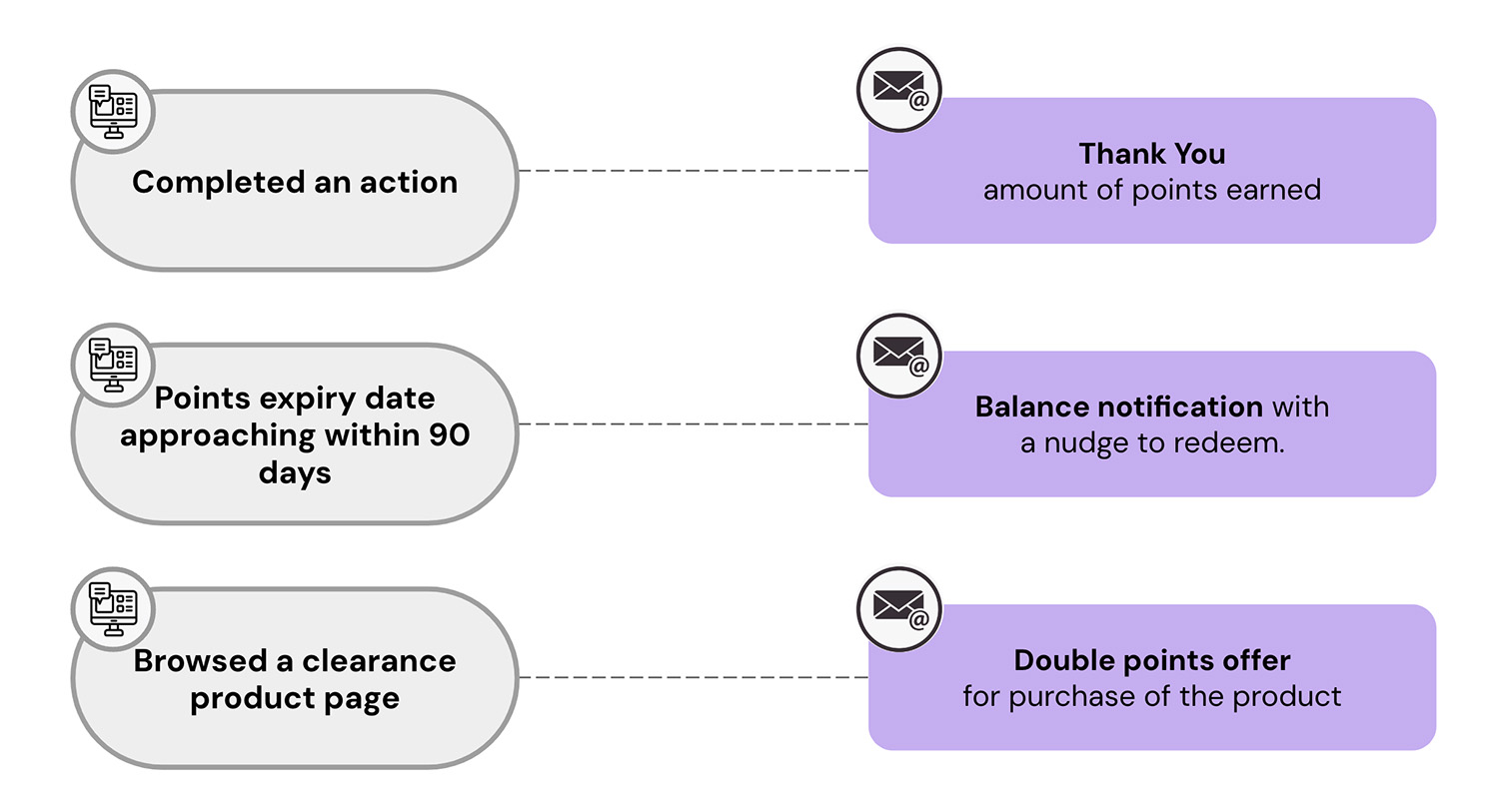
VIP Treatment: Appreciating “Whale” Customers
Monitoring customer behaviors allows e-commerce shops to detect VIP consumers and segment them based on their performance. They get the best rewards like early access to new products, early access to discounts, exclusive product drops, and unique promo codes. Knowing more about “whales” means businesses can create “look-alike” campaigns on social media to attract similar customers.
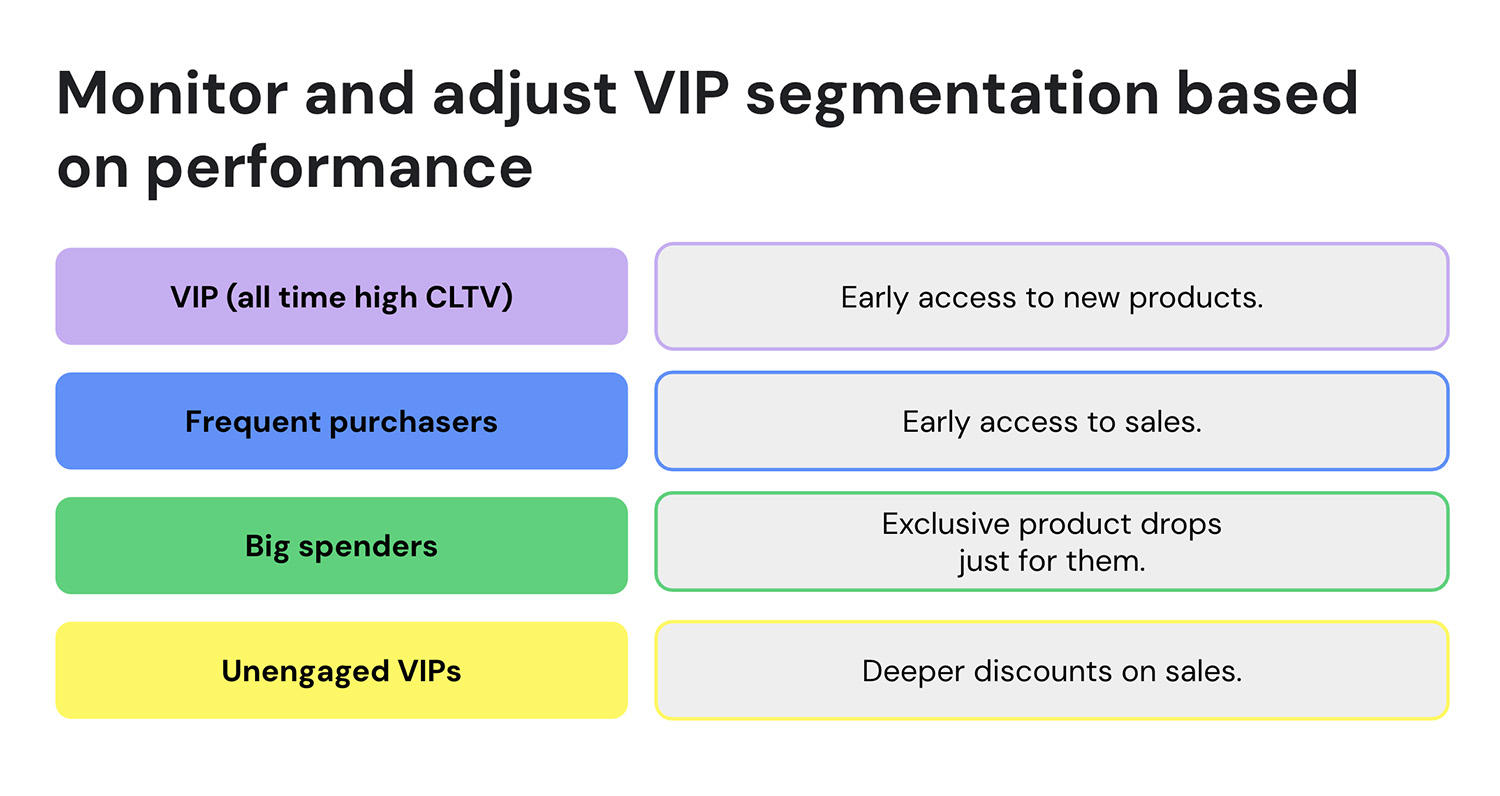
Re-Engaging Resistant Customers: Win-Back Flows
Recovering customers is not always worth it; brands shouldn’t give up on resistant leads. Win-back campaigns get 29% open rates, and 45% of subscribers will continue to open emails from a brand after a win-back email.
Such flows should consist of multiple emails and time-sensitive offers, re-engaging customers who might have lapsed. Once more, leveraging data and employing strategic communication is crucial. Up to five emails should be enough to achieve the goal without risking reputation.

Remembering that the acquisition of these leads already consumed some budget is the best way to not give up on them. Usually, when they open at least one email, they’re back in the game.
Conclusion: Implementing and Automating Retention Techniques
The six steps we’ve provided in this article can be used for effective customer retention through automation. Knowing your audience, communicating with them in the right way, anticipating their needs, rewarding the active ones, and not giving up on the resistant ones is the way to summarize our recommendations. Plan automations to reduce costs, maximize profit, and free up resources for other tasks.
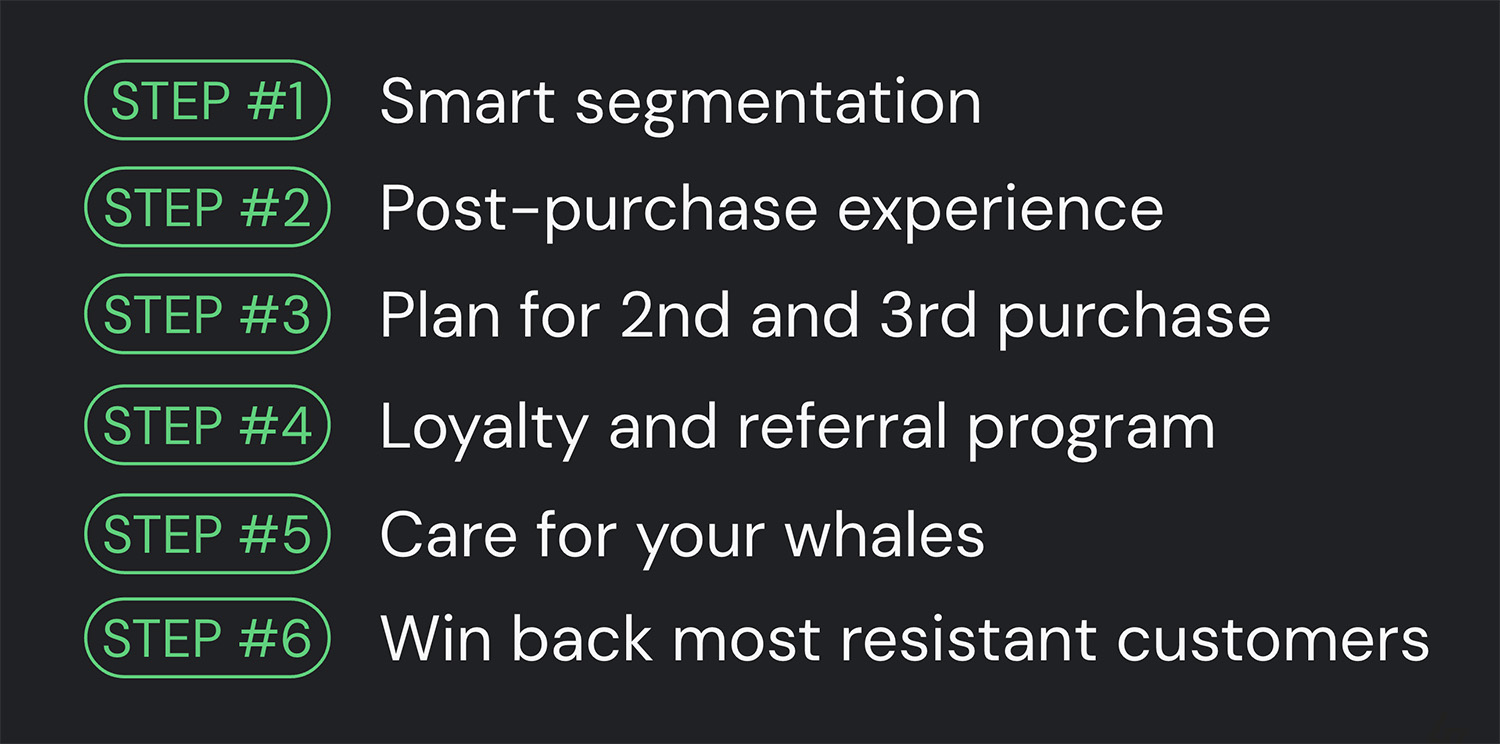
We invite you to embrace this journey towards enhanced customer satisfaction and long-term success in the competitive e-commerce realm. You might be surprised by the results that can be achieved with the right strategy and thought-through execution.




